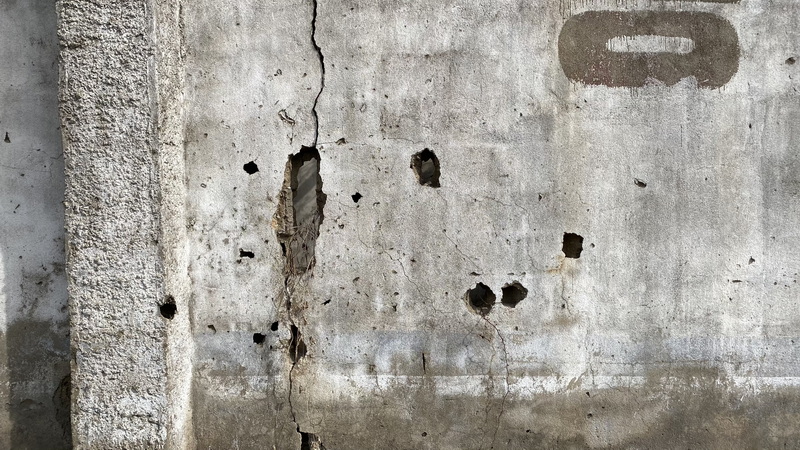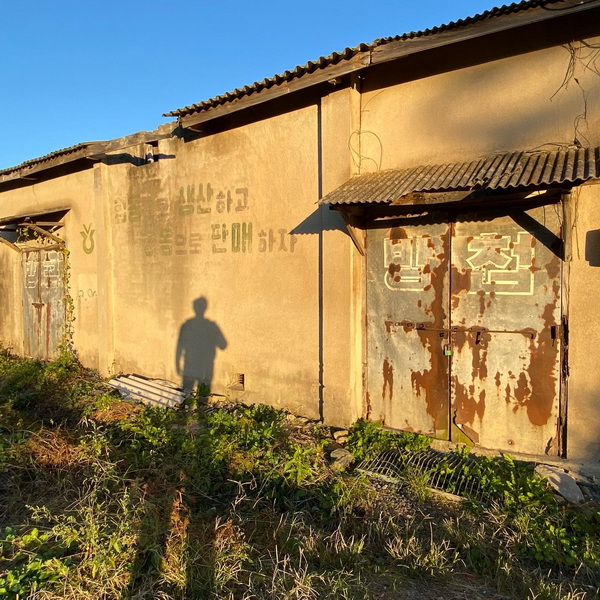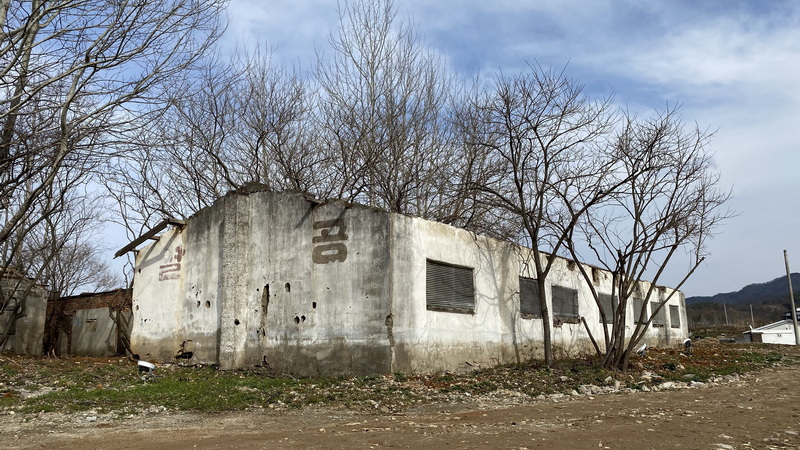Anticommunism and Counterespionage in the Middle of Nowhere
By Isaiah Winters
It’s hideous, yet I can’t look away.” This recently rang true for a few new Korean words that’ve caught my attention in rural Honam. These include terms such as 반공 (anticommunism), 방첩 (counterespionage), and my absolute favorite, 멸공 (eradication of communism). The terse, disyllabic smack of each phrase echoes the country’s more militarized past and showcases the Korean language’s knack for brevity. This edition of Lost will look into these and related terms found scattered across the countryside so that once you encounter them yourself, you similarly can’t look away.
The first of these terms to catch my eye was 멸공 out in Hwasun-gun. There a little farming complex bears the phrase in large, bleached-red lettering that’s still discernable from the nearby highway. Up close, the lettered wall reveals dozens of tiny holes that add consequence to its fading message. Our very own editor-in-chief of the Gwangju News, Dr. Shaffer, recounted that the term 멸공 became prominent in the 1970s, and given the tumult of that decade, the wall’s myriad pockmarks at execution level make one hope that the site was merely used for target practice and not by any junta firing squad.
Normally, a place as rural and nondescript as this wouldn’t deserve so much analysis, but there’s one more detail that adds a grim mystique to it: floodlighting. Someone considered this site important enough to install upward-facing floodlights at the base of the pockmarked building to make it visible at night. This suggests the site has some significance, though my online trawling failed to yield any corroboration. Interestingly, this floodlit throwback also appears to have a conspicuous spelling error: The “ㅕ” letter in “멸” has a slight projection to the right that makes it easy to confuse with “ㅏ” when seen from the highway. My wife had the funniest interpretation of this: The painter was likely an illiterate dolt.

Speaking of dolts, my otherwise unfruitful research into this location yielded a religious sect of anticommunists that’s worth a tangent. Known as Saeil Church, adherents believe the devil in the Bible refers to communist countries such as North Korea, China, and Soviet Russia, which will invade South Korea in a ten-day war unless locals accept the church’s doctrine and receive the “king’s authority,” or something.[1] To thrust this message out into the public, a few male members of Saeil Church cheekily stripped nude and rode through Seoul on the bed of a work truck during the colder months of 2007. The truck, emblazoned with the message “멸공 † 새일,” was later pulled over by police, who arrested the naked zealots. By the way, I explore these rabbit holes so you don’t have to. Let’s move on.
In Honam, Yeonggwang-gun retains more anticommunist slogans than anywhere I’ve visited. The terms 반공 and 방첩turned up in three different areas of this sleepy, bucolic county on a single visit to Gunyusan. (A half-dozen boar also turned up as I made my way down the mountain, an unnerving experience for another article.) Consistently charmless, the slogans are usually painted on the facades of drab, utilitarian depots for agricultural goods and are always conspicuously facing the main roads. Dr. Shaffer noted that these two terms were a bit older, having emerged earlier in the 1970s. Apparently, they were easy to spot along highways in those days, with some standing a few meters high. Today the larger displays are virtually all gone due to highway expansions, so finding one would be something special.

Naturally, you may be wondering what the middle of nowhere has to do with fervent anticommunism, so now’s a good time to talk about the Saemaul Movement. For most of the 1960s and 1970s, South Korea was ruled by military strongman Park Chung-hee, with the backing of the U.S. In those days, the two Koreas were at relative economic parity despite their opposing economic paradigms: capitalism and communism. Just as the U.S. and U.S.S.R. aimed to outperform each other in the Cold War, both Koreas sought to outdo each other, too. In the mad rush to modernize at any cost, imbalances between the South’s fast-developing cities and still-impoverished villages soon intensified. Thus, Park sought to mitigate certain urban–rural discrepancies by launching the Saemaul (or “New Village”) Movement.
The Saemaul Movement sought to promote community-driven socioeconomic development in three stages: stage I (1971–1973) improve basic rural infrastructure, stage II (1974–1976) expand agricultural output, and stage III (1977–1979) “disseminate” rural communities’ newfound can-do spirit to the broader society. A few of the catchwords associated with the movement were “diligence, self-help, and cooperation.”[2] It’s not hard to see parallels with the Juche state ideology of North Korea, which promoted economic self-sufficiency, military self-reliance, and political independence. Given the ideological overlap, it begins to make sense that the collectivist slogans of the Saemaul Movement were often explicitly framed as anticommunist to avoid confusion. My favorite example of this is a slogan that says, “Let’s produce and sell communally through cooperation!” This exhortation was flanked by the words 반공 and 방첩 to prevent anyone from getting the wrong idea.

Ultimately, the Saemaul Movement was a drastic tradeoff between modernization and preservation. For example, thatched roofs which were common in rural Korea began to be replaced en masse in 1972 as part of the movement. In just six years, millions of homes had been fitted with tin, slate, or tile roofing – a huge aesthetic change to traditional housing. Similarly, traditional totem poles at village entrances, village-god shrines, and folk ceremonies were decimated during this time. On the other hand, the irrigation systems and telecommunications networks found today in rural areas largely date back to this time, while many households, now with less flammable roofing, were finally being electrified. Around this time, the Korean government also ordered coal or oil to be used for ondol heating systems rather than the traditional firewood. This mandate, in tandem with a robust reforestation effort, helped restore much the vast forests we enjoy in Korea today.[2]
My aim here is neither to extol nor vilify the Saemaul Movement, but rather to highlight its continued impact on the Korea we see today. Something as dull as faded slogans on an abandoned building’s façade can conjure up so much history if we simply know what they mean. And so, when you’re in the countryside, keep your eye out for these and other slogans from yesteryear. There’s far more to them than meets the eye.
Photographs by Isaiah Winters.
Source
[1] Jeong, Y. (2016, June 21). 멸공 외치는 새일파 그들은 누구인가? Kportalnews. http://www.kportalnews.co.kr/news/articleView.html?idxno=13571
[2] Asian Development Bank. (2012). The Saemaul Undong Movement in the Republic of Korea: Sharing Knowledge on Community-Driven Development (CDD). ADB.org. https://www.adb.org/sites/default/files/publication/29881/saemaul-undong-movement-korea.pdf
The Author
Born and raised in Chino, California, Isaiah Winters is a pixel-stained wretch who loves writing about Gwangju and Honam, warts and all. He particularly likes doing unsolicited appraisals of abandoned Korean properties. You can find much of his photography on Instagram @d.p.r.kwangju.







